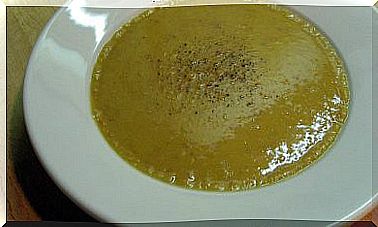Gastroesophageal Reflux Disease: Symptoms And Treatment
Gastroesophageal reflux disease is generally chronic and has a good prognosis. In addition, the symptoms vary in intensity and there are intermittent periods of remission.

Gastroesophageal reflux is the spontaneous passage without apparent cause of gastric contents into the esophagus. It is mainly due to the transient and spontaneous relaxation of the lower esophageal sphincter due to the distension of the stomach.
This disease affects the quality of life of those who suffer from it. However, to consider it a pathology, the symptoms must be significant enough in terms of presence or intensity.
Therefore, gastroesophageal reflux disease is a disease process that is generally chronic and has a good prognosis. In addition, the symptoms can vary in intensity and there are also intermittent periods of remission.
Causes of gastroesophageal reflux disease

The occurrence of gastroesophageal reflux disease depends on many factors. Nevertheless, the most important is the malfunction of the lower esophageal sphincter. On the other hand, among the factors that promote gastroesophageal reflux, we find alterations in:
- Esophageal motility
- The upper esophageal sphincter
- The mechanisms for cleaning the esophagus and stomach contents
Often, hiatus hernia is associated with gastroesophageal reflux disease. Indeed, this type of hernia promotes reflux.
Symptoms
Gastroesophageal reflux disease presents a wide variety of symptoms. This can range from the simple presence of signs to the existence of esophagitis of varying severity.
Likewise, complications such as stricture, esophageal ulcer or Barrett’s esophagus may appear.
The variability of symptoms depends on factors such as the duration of the episodes, the volume and the virulence of the reflux.
In addition, it is also necessary to take into account the contact time of the reflux with the esophageal mucosa. Here are the most common symptoms:
- Pyrosis: this is the most characteristic symptom. It’s a burning sensation going up from the epigastrium
- Acid regurgitation: This is the second most common symptom. This is the spontaneous passage of gastric contents into the mouth. This can be promoted by certain postures or by increased abdominal pressure.
- Central chest pain: its onset is acute and sudden. It occurs by spasms of the esophagus. We can suspect that the origin of the pain is gastroesophageal reflux when it is related to food intake and not to exertion.
- Dysphagia: it is choking
- Odynophagia: it is a painful swallowing. In addition, it is not a common symptom of gastroesophageal reflux disease. However, if it does occur, it may indicate the presence of esophagitis
The typical symptoms of gastroesophageal reflux disease present a very reliable diagnosis. With the presence of these symptoms, it is possible to establish an almost certain diagnosis and to prescribe treatment without the need for additional examinations such as endoscopy.
On the other hand, if the patient presents alarming symptoms, or does not respond well to conventional treatment, an upper gastrointestinal endoscopy should be performed.
Treatment of gastroesophageal reflux disease
Treatment for gastroesophageal reflux is aimed at relieving symptoms and treating esophagitis. It also treats and prevents possible complications.
Sometimes specialists give some advice on lifestyle, hygiene and dietary measures. In addition to medication and, in some cases, surgery.
Hygiene and dietetic measures

Advice on lifestyle and hygiene and dietary measures should be individualized for each patient according to the risk factors present in each case. Consideration should also be given to the patient’s clinical response to these changes.
It is better to quit smoking and reduce alcohol consumption. For obese or overweight patients, it is advisable to lose weight.
Another wise measure is the elevation of the head of the bed in cases where there is a risk of reflux while lying down. It is also recommended to:
- Avoid large meals. It is better to eat less abundantly, but more frequently
- Detect and avoid foods that trigger symptoms
- Control stress
- Not doing extreme physical exercise
- Spend more time chewing food
Medication
Pharmacological treatment is based on inhibiting or neutralizing gastric acid secretion. Among the groups of drugs commonly used for the treatment of reflux are proton pump inhibitors.
The latter result in the complete inhibition of gastric secretion. They also relieve symptoms, treat esophagitis and prevent recurrence.
Antacids are also used to effectively and quickly relieve heartburn. On the other hand, prokinetics are administered during predominant regurgitation.
On the other hand, H2 blockers produce a partial inhibition of gastric acid secretion. They are indicated for the treatment of reflux when there is no esophagitis.
Does this disease make you suffer too much? As you can notice, there are several factors that can trigger it or make it worse. However, there is no shortage of alternatives to control and treat it.









